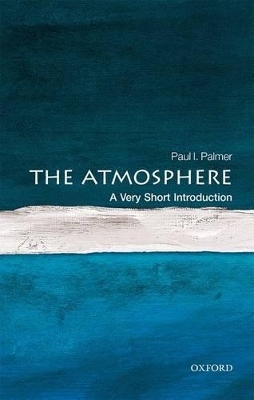
The Atmosphere
A Very Short Introduction
Seiten
2017
Oxford University Press (Verlag)
978-0-19-872203-8 (ISBN)
Oxford University Press (Verlag)
978-0-19-872203-8 (ISBN)
In this Very Short introduction Paul Palmer looks at the structure and basic physics and chemistry of the Earth's atmosphere, comparing it to the atmospheres of other planets, particularly our neighbours, Venus and Mars. Palmer looks at the effects of pollutants and climate change, and what may happen to our atmosphere in the future.
The atmosphere is the thin, diffuse fluid that envelops the Earth's surface. Despite its apparent fragility, the existence of this fluid is vital for human and other life on Earth.
In this Very Short Introduction Paul Palmer describes the physical and chemical characteristics of different layers in the atmosphere, and shows how the interactions where the atmosphere is in contact with land, ocean, and ice affect its observed physical and chemical properties. He also looks at how movement in the atmosphere, driven by heat from the sun, transports heat from lower latitudes to higher latitudes, and is a fundamental feature of the general circulation in the atmosphere. Finally, Palmer presents an overview of the types of measurements used to understand different parts of the atmosphere, and identifies the future challenges for atmospheric scientists.
ABOUT THE SERIES: The Very Short Introductions series from Oxford University Press contains hundreds of titles in almost every subject area. These pocket-sized books are the perfect way to get ahead in a new subject quickly. Our expert authors combine facts, analysis, perspective, new ideas, and enthusiasm to make interesting and challenging topics highly readable.
The atmosphere is the thin, diffuse fluid that envelops the Earth's surface. Despite its apparent fragility, the existence of this fluid is vital for human and other life on Earth.
In this Very Short Introduction Paul Palmer describes the physical and chemical characteristics of different layers in the atmosphere, and shows how the interactions where the atmosphere is in contact with land, ocean, and ice affect its observed physical and chemical properties. He also looks at how movement in the atmosphere, driven by heat from the sun, transports heat from lower latitudes to higher latitudes, and is a fundamental feature of the general circulation in the atmosphere. Finally, Palmer presents an overview of the types of measurements used to understand different parts of the atmosphere, and identifies the future challenges for atmospheric scientists.
ABOUT THE SERIES: The Very Short Introductions series from Oxford University Press contains hundreds of titles in almost every subject area. These pocket-sized books are the perfect way to get ahead in a new subject quickly. Our expert authors combine facts, analysis, perspective, new ideas, and enthusiasm to make interesting and challenging topics highly readable.
Paul Palmer is Professor of Quantitative Earth Observation at the University of Edinburgh, and a Royal Society-Wolfson Research Merit Award Holder. He has previously won a Leverhulme Prize and a Zeldovich Medal from the Russian Academy of Sciences. He is the author of Essential Maths for Geoscientists: An Introduction (Wiley-Blackwell, 2014).
1: What is special about Earth's atmosphere?
2: Atmospheric physics
3: Atmospheric motion
4: Atmospheric composition
5: Atmospheric measurements
6: Our future atmosphere
Further Reading
Index
| Erscheinungsdatum | 24.02.2017 |
|---|---|
| Reihe/Serie | Very Short Introductions |
| Zusatzinfo | 31 black and white images |
| Verlagsort | Oxford |
| Sprache | englisch |
| Maße | 110 x 174 mm |
| Gewicht | 122 g |
| Themenwelt | Naturwissenschaften ► Geowissenschaften ► Geologie |
| Naturwissenschaften ► Geowissenschaften ► Meteorologie / Klimatologie | |
| Naturwissenschaften ► Physik / Astronomie ► Angewandte Physik | |
| ISBN-10 | 0-19-872203-6 / 0198722036 |
| ISBN-13 | 978-0-19-872203-8 / 9780198722038 |
| Zustand | Neuware |
| Haben Sie eine Frage zum Produkt? |
Mehr entdecken
aus dem Bereich
aus dem Bereich


